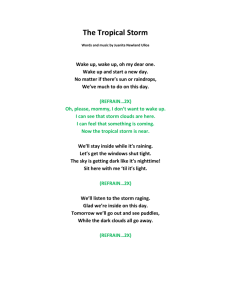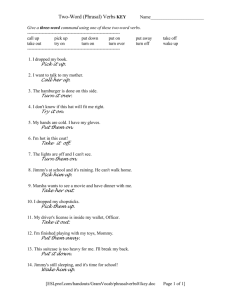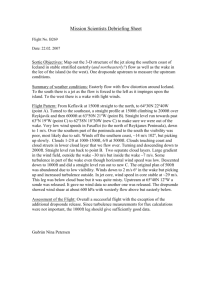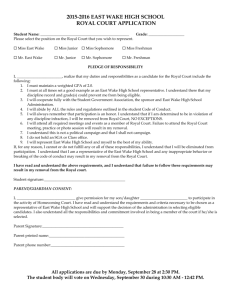Boundary Layer Separation Analysis
advertisement
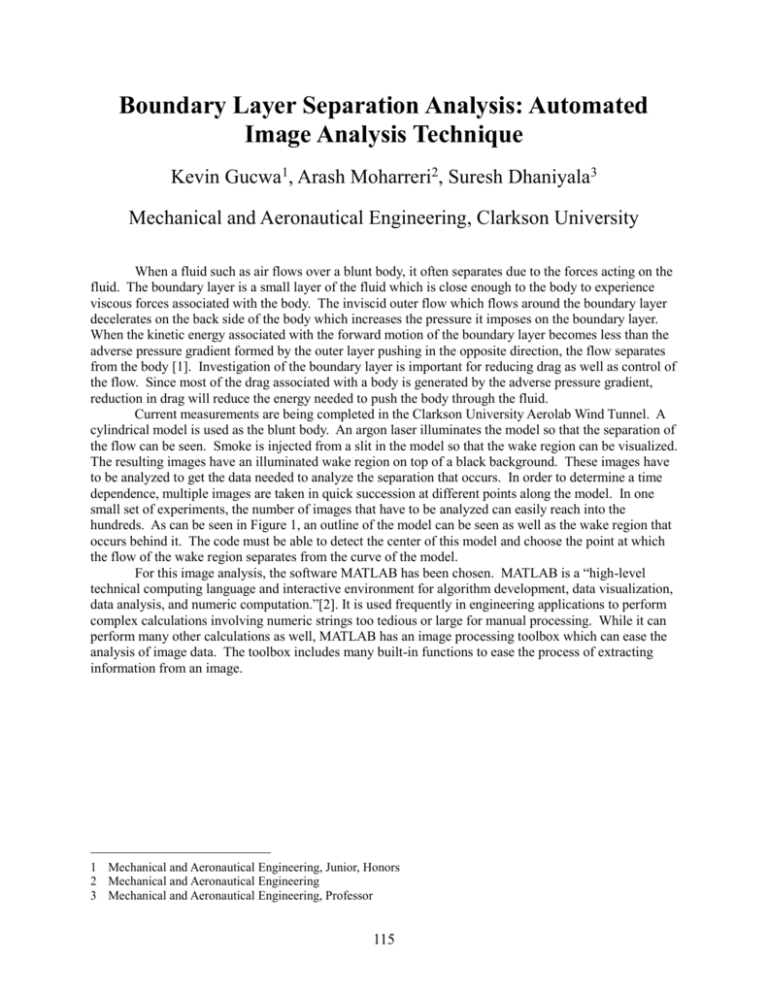
Boundary Layer Separation Analysis: Automated Image Analysis Technique Kevin Gucwa1, Arash Moharreri2, Suresh Dhaniyala3 Mechanical and Aeronautical Engineering, Clarkson University When a fluid such as air flows over a blunt body, it often separates due to the forces acting on the fluid. The boundary layer is a small layer of the fluid which is close enough to the body to experience viscous forces associated with the body. The inviscid outer flow which flows around the boundary layer decelerates on the back side of the body which increases the pressure it imposes on the boundary layer. When the kinetic energy associated with the forward motion of the boundary layer becomes less than the adverse pressure gradient formed by the outer layer pushing in the opposite direction, the flow separates from the body [1]. Investigation of the boundary layer is important for reducing drag as well as control of the flow. Since most of the drag associated with a body is generated by the adverse pressure gradient, reduction in drag will reduce the energy needed to push the body through the fluid. Current measurements are being completed in the Clarkson University Aerolab Wind Tunnel. A cylindrical model is used as the blunt body. An argon laser illuminates the model so that the separation of the flow can be seen. Smoke is injected from a slit in the model so that the wake region can be visualized. The resulting images have an illuminated wake region on top of a black background. These images have to be analyzed to get the data needed to analyze the separation that occurs. In order to determine a time dependence, multiple images are taken in quick succession at different points along the model. In one small set of experiments, the number of images that have to be analyzed can easily reach into the hundreds. As can be seen in Figure 1, an outline of the model can be seen as well as the wake region that occurs behind it. The code must be able to detect the center of this model and choose the point at which the flow of the wake region separates from the curve of the model. For this image analysis, the software MATLAB has been chosen. MATLAB is a “high-level technical computing language and interactive environment for algorithm development, data visualization, data analysis, and numeric computation.”[2]. It is used frequently in engineering applications to perform complex calculations involving numeric strings too tedious or large for manual processing. While it can perform many other calculations as well, MATLAB has an image processing toolbox which can ease the analysis of image data. The toolbox includes many built-in functions to ease the process of extracting information from an image. 1 Mechanical and Aeronautical Engineering, Junior, Honors 2 Mechanical and Aeronautical Engineering 3 Mechanical and Aeronautical Engineering, Professor 115 Figure 1. The wake region behind a blunt body Previous efforts used a manual process to visually detect where the flow separated from the curve of the model and started the wake region. Each image had to be looked at by hand and the angle calculated using basic trigonometry. Since each image was processed by hand, the process became quite time consuming when hundreds of images had to be analyzed. Human error also affected the calculated angle. Due to the presence of manual selection of the separation point, each image provided a different angle depending on who had processed the image. Therefore results from different images analyzed by different people could not be compared effectively. In an effort to take out the human error associated with the previous method of analysis, a MATLAB program is needed to automatically process the images and report the separation angle. Since the calculations are all performed by a program, the steps taken are the same for each image guaranteeing that the results from different sets of images are based on the same criteria. Due to the inherent capabilities of MATLAB for processing data sets, it is perfect for analyzing these images. The images are made up of pixels that consist of red, green, and blue. Each pixel has a different value based on the makeup of the red, green, and blue present in it. The brightness of an image is also characterized based on the presence of these colors. Using MATLAB the colors and differences between them can be sorted and used to find the separation angle of the wake region. Using MATLAB's rgb2gray function, the input image is converted from a red, green, and blue image into an intensity image where each pixel is represented by a single value ranging from 0 for black to 255 for white. Since the wake region appears as a bright blue/white region in each image, the intensity values are much higher than those of the black background. While it was initially attempted to separate the wake region and the background by selecting an intensity value and only choosing points with intensity greater than that, variations in each image prevented this from being as automated as desired. Since the intensities increase sharply as the image enters the wake region, so do the slopes of the intensities. Figure 2 shows the change in slope with respect to the y-axis of the image. 116 Figure 2 When there is a sharp change in intensity, the slopes will be greatest. Using these slopes, a point of separation between the background and wake region can be calculated regardless of the overall intensities present in the images. For each set of images taken, a null image is also taken to give a reference for the location of the model. This image is used to generate a curve around the model. This curve is represented by the red line in Figure 5. By comparing this curve from the null image and the image with a wake region, the point of separation occurs when these two curves no longer coincide. The differences between the start of the wake region and the start of the null image can be plotted, as seen in Figure 3, to show where these differences approach zero. Figure 3. Differences between null and wake region Due to the differences present between the null image and the image with the wake region, the differences do not always approach zero but rather a constant value. The slopes of this plot can show where the change in the differences becomes zero and thus the point of separation between the wake region and the reflection. Figure 4 shows the slopes of the differences. At the point where the slopes equal zero, the null and wake regions separate. 117 Figure 4. Slopes of the differences in Figure 3 At present the current method gives values for test images which are consistent with previously published results as well as the manual inspection of the image. Figure 5 shows the results of the program. The output shows the calculated angle as well as the lines representing the wake region shown in blue and null image. Figure 5. The resulting angle calculation While these results are gained with a few images, more testing has to be completed to make sure that nuances present in different images do not alter the results. If successful the code has the ability to give almost instant results to the researcher as to the angles of separation while the experiments are being conducted. References [1] Schlichting, H., and Gersten, K., Boundary Layer Theory, 8th ed. (New York: Springer, 2000). [2] http://www.mathworks.com/products/matlab/ 118
